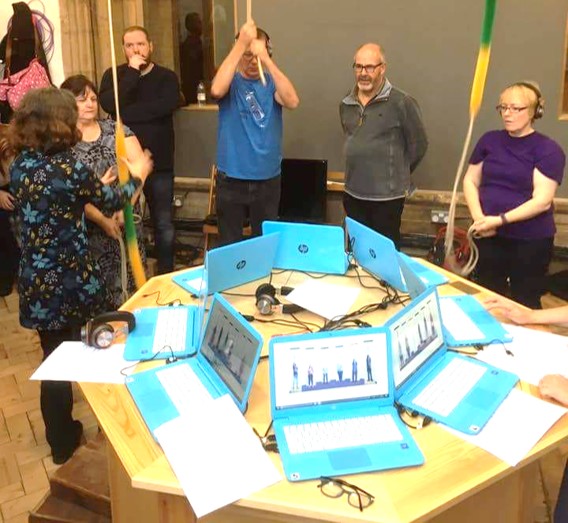Design considerations
Before you purchase anything, think about how you are going to use your simulator:
- A form of sound control
- One-on-one practice
- Multiple workstations
Do talk to your neighbouring towers and your District or Branch to see what use they might like to make of the system and whether you can collaborate on funding or installation.
Sound control
If you just need an alternative form of sound control, you can do this relatively cheaply, but you will be missing out on many of the benefits of a simulator. If your bells are difficult to access so that you can silence them, why not consider one or more dumbbells in the clockroom?
One-on-one teaching
If you are going to use your simulator for one-on-one practice, you will need a screen (either a TV screen or projector & screen) but it does not need to be a large one. To make the most of this set-up a triple action foot-switch is recommended.
Multiple workstations
You can have more than one workstation so that several ringers can practise different things at the same time. You wil need several computers and several sets of headphones. Some sensor systems are unable to cope with multiple workstations so future plans may influence your choice of system.
If you plan to have multiple workstations do give some thought to where the computers will be placed and to cable management. Budget for additional power sockets to be professionally installed.
And finally ...
Don't try to do things on a shoe-string. Be bold. Many ringing societies will contribute to improvements in teaching facilities from their bell restoration or training funds and you should certainly allow for this in any bell restoration project. There are many local charities who will contribute to imaginative projects, especially when they involve people gaining access to heritage and work with young people.

Ringing simulator with multiple workstations at Mancroft Ringing Discovery Centre
» Simulator software